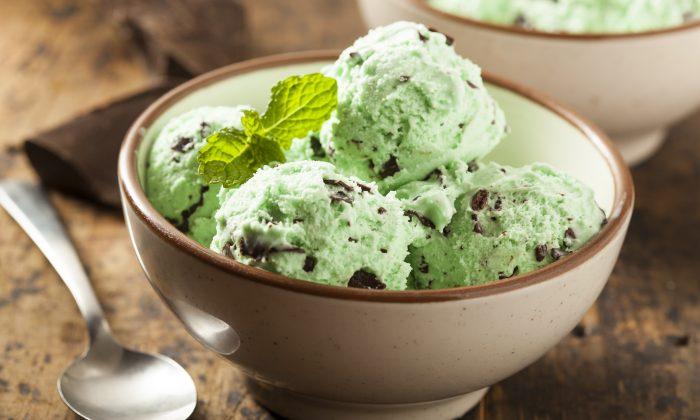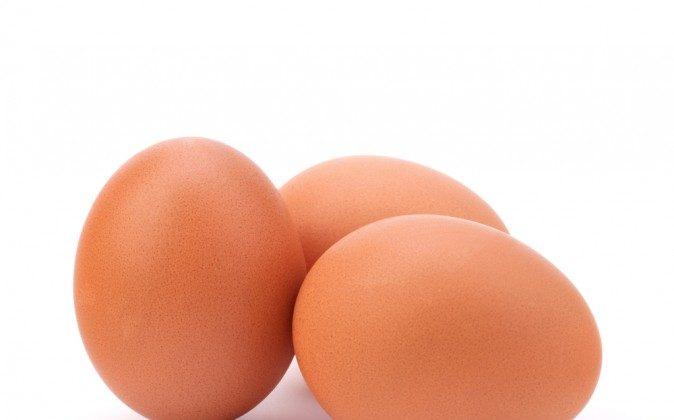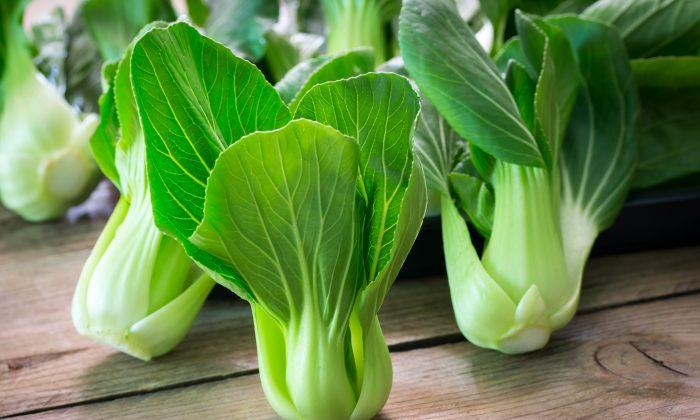I scream, you scream, we all scream for ice cream.
Recently I asked my son what his favorite treat was. The choices? Cookies, cake, or ice cream. I knew the answer.
When I traveled out of town last month and left him to ride his bicycle to camp each day, he took the pocket money I gave him and stopped at the gluten-free, vegan food cart for a scoop in a gluten-free waffle cone every single day on his afternoon travels back to the friend’s house where he was staying while I was away.
Summertime teenage freedom and a daily scoop of ice cream. There’s really nothing that can beat that.
Nothing, of course, except a digestive system that’s running in tip-top, mint condition, allowing you to enjoy your food and elevate your mood.
Food as unlikely as ice cream. (One of the first foods ever to give me some major digestive distress, and on my honeymoon, no less!)
Did you know that in Chinese medicine, summer is the month of the small intestine? It’s the perfect time to bring in some special foods that do double duty to nourish your insides while tickling your taste buds.
And, yes, it’s also a good time for ice cream. Can you guess where we’re going with this?

This summer-lovin' ingredient might be growing in your garden, and it’s a taste that’s likely not new to you.
It’s peppermint! We’re not talking toothpaste or sugar-laced candy canes today. The mint I have in mind is the fresh herb that grows like gangbusters in the warm summer months.
There are about 25 different species of mint. Peppermint in particular is a natural hybrid between Mentha aquatica (water mint) and Mentha spicata (spearmint).
But you don’t have to stick to just plain peppermint. You can often find fun varieties like orange, lavender, ginger, pineapple, and yes, even chocolate mint (rest assured, these are actual varieties of plants, not fake flavorings).
Whatever you choose, peppermint packs a poignant digestive punch.
Peppermint is best known for helping relieve symptoms of IBS (irritable bowel syndrome), including pain, cramps, and spasms. Multiple clinical trials have studied this mighty herb as it relates to digestive distress, and it appears that peppermint’s power lies in it’s ability to activate an anti-pain channel in the colon called TRPM8.
Trials generally use enteric-coated peppermint capsules, but about 1/4 cup of fresh peppermint leaves delivers a similar amount to a typical capsule if you prefer to be playful with food instead of supplements. (We'll get really playful today with a peppermint-inspired ice cream below).
When I consider digestive distress, I often like to start at the “top,” and that’s the place where peppermint shines.
Just the smell of mint activates the salivary glands in your mouth and the secretion of digestive enzymes, helping to facilitate metabolism. It’s why you'll often see mint included in appetizers or as palate cleansers at a fancy restaurant.
Traditional cultures use peppermint to help relieve nausea due to motion sickness or other stomach unease. Keep peppermint tea in your pantry or take along sugar-free peppermint gum when you might be in motion. Pair it with ginger for an extra herbal punch.
And we can’t forget that peppermint helps freshen your breath. While that might not help with digestion directly, it’s sure to help keep your mouth (and those around you) happy.
There’s one thing to consider when it comes to digestion and peppermint. Some studies show that peppermint can relax the LES (lower esophageal sphincter). That’s the valve between your stomach and esophagus, so its use could be a contributing factor to heartburn.

If you suffer from heartburn, be cautious with peppermint. That’s not to say that it’s not right for you, but you'll want to bring peppermint in slowly to see how your body responds to it.
Go beyond gum and get playful with peppermint.
- Make peppermint tea by muddling fresh herbs and steeping in hot water, or purchase peppermint tea bags.
- Add a handful of fresh peppermint to your smoothie (it complements just about any fruit).
- Chop fresh peppermint and add it to roasted veggies, green salads, fresh fruit, dressings, and soups.
- Add a drop of peppermint essential oil (therapeutic grade) to your water or tea.
- Grow your own. It’s especially happy outside during the warm summer months, but it can thrive inside on a sunny windowsill all winter long.
- Give my new favorite gut-lovin' ice cream a try.
Peppermint Nib Ice Cream
When we were thinking about how to incorporate peppermint into a playful recipe, I said, ice cream, please.
You need an ice cream maker to churn your own creamy concoctions, but it’s a kitchen appliance that I find fun to have around, and if you’re without one, I’ve got a workaround for you too. (Nobody should be without this yummy treat.)

Making ice cream, even with dietary restrictions, is quite easy, and every time I treat guests or my kiddo to homemade ice cream, they always ask for a second scoop.
- 2 cans full-fat, organic coconut milk (Native Forest, Arroy-D, or Natural Value)
- 1/2 cup fresh mint leaves
- 1/4 teaspoon organic peppermint extract
- 1 teaspoon collagen powder (optional)
- 1 cup raw spinach
- Pinch of sea salt
- 6–10 drops liquid stevia or to taste
- 1/3 cup raw cocoa nibs
Directions
Freeze ice cream maker bowl overnight or follow the instructions for your machine.
Blanch your mint leaves: Pour a kettle of boiling water over the fresh mint leaves and immediately submerge into a bowl of ice water.
Make your ice cream base: Add all ingredients, except cocoa nibs, into a blender and blend until smooth (including blanched mint leaves).
Optional: Strain mixture to remove any remaining fibers from the mint or spinach if desired. Taste it and add stevia to your desired sweetness.
Pour the mixture into your prepared (frozen) ice cream maker bowl and follow your machine instructions. During the last minute or so, add the cocoa nibs and churn until the nibs are well-combined.
Enjoy right away. Because this ice cream is free of artificial stabilizers, it’s best to eat it as soon as it finishes churning (which I’m sure you'll be happy to do). Freezing usually results in rock-hard ice cream.
Are you without an ice cream maker? Don’t fret. Follow the instructions, and pour the blended mixture into ice pop molds for Peppermint Nib Ice Cream Pops.
Kitchen Tip. Double or triple the recipe, and keep liquid base in the fridge (up to a week). Any time you want ice cream, you will already have the base ready to go.
So pick up some peppermint at your local farmers market (or grow your own), and churn up some gut-lovin' ice cream soon.
You'll be one step closer to a digestive system that’s in mint condition.
With a career born of a personal family health crisis, award-winning functional nutritionist and educator Andrea Nakayama takes the idea of food as personalized medicine beyond a clinical practice. Her online programs at ReplenishPDX.com and HolisticNutritionLab.com guide her clients in taking ownership over their health. [email protected]






Friends Read Free